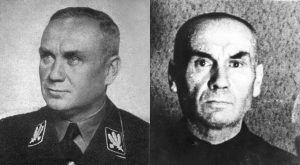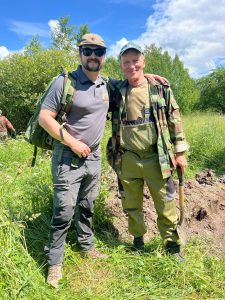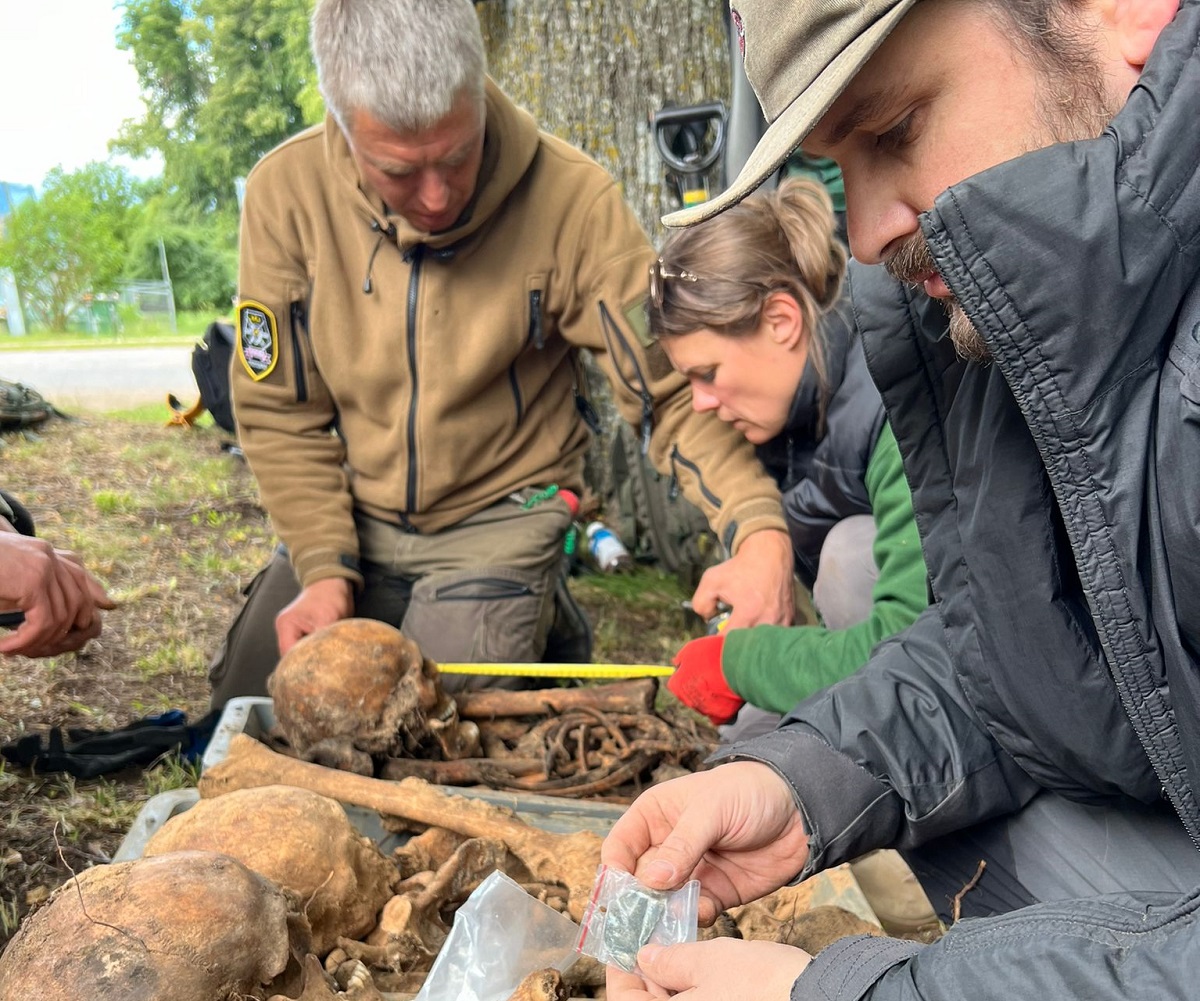It’s almost a truism at this stage to say that the Nazis were bad, but some were definitely worse than others.
In every war, there are puppets and there are their masters. There are the pawns that are pushed, and there are the hands that push them.
In German-occupied Europe of the early 1940s, a man called Friedrich Jeckeln was one of the men that made others move.

“There is no doubt that he was one of the guys with the power, authority and desire to make terrible things happen,” said Jonathan Baynard, speaking to the Tyrone Herald last week. As well as having worked as a humanitarian aid worker in Ukraine, the Omagh man is part of an archeological charity who specialise in locating the bodies of dead soldiers.
“I work with a non-profit organisation called Legenda,” Mr Baynard explained.
“We are built up from volunteers from around the world and our goal is to find, recover and identify missing soldiers from the First and Second World Wars in Latvia.”
Usually, when Jonathan and his team get a tip-off revealing the whereabouts of a mass grave or bone-laden battlefield, the mission is to exhume the bodies, and give the dead the dignified burial that was denied to them by their violent, unceremonious deaths.
But, once in a while, they get information about a skeleton that must be dug up for a different reason.
“Recently we got a call from a professor who told us that the body of a guy personally responsible for ordering and organising the deaths of over 100,000 people was buried beneath a roadside flowerbed in the Latvian capital of Riga.
“Before his name was said, we all knew who he was talking about,” Mr Baynard said.

Infamous
Born in 1895, Friedrich Jeckeln went to become an infamous German SS commander and police leader.
During his time with the Einsatzgruppen death squad, he personally oversaw the murder of 100,000 Jews, Romas, Slavs and other so-called ‘undesirables’ throughout Latvia, Lithuania, Estonia and Ukraine. When the Nazi regime was finally forced to surrender, Jeckeln was convicted of war crimes by a Soviet military tribunal and summarily hung.
“He was one of six high ranking officers that were sentenced to death in the Riga Trials,” Mr Baynard said.
“Immediately after being found guilty they were marched onto the back of trucks, bound, driven to the gallows and executed.
“Thousands of spectators watched what was the first public execution to take place in Latvia in over 300 years,” Mr Baynard said.
If you go online, you can see pictures from the day we are talking about. There are even videos that show the undulating crowd swamping the streets of Riga to watch their tormentors final minutes.
One memoirist evocatively summed up the disturbing scene many years later when he wrote, “When the nooses were tightened around the necks of the condemned, the trucks slowly drove away and the generals were left hanging… A terrible roar rose from the crowd. People were howling and ululating.”
It was strange time in history. For the people of Latvia, it probably felt like the dawn of a new age.
However, with hindsight, we now know it was the end of one term of terror and the beginning of another. Genocidal fascism had been defeated. But, from its ashes, would rise a totalitarian communist regime that would rule for 47 long years.
“It is a crazy piece of history to somehow be so directly involved in,” Mr Baynard said.
Countless
“This guy was a real bad egg. He had men, women and children all gathered up in sandpits and shot like sardines. In actual fact, we have dug up countless victims of this guy. Once you’ve literally picked the bones of so many innocent people out of the ground, you really get a sense of the evil you are dealing with.
“I don’t know if I would say our mission to get Jeckeln is one of revenge, as such. But he deserves to be put in the right place, not sequestered beneath a flower bed in the middle of the city.”
Generally, when Legenda remove remains from the earth, be they Nazi solider or slaughtered civilian, they are seen as a victim, as per the Geneva Convention.
This affords them the right to a proper burial, and an obligation to try to notify the family.
With Jeckeln, however, it might be a different story.
“Because of how unusually instrumental he was in orchestrating so much civilian deaths, I have suggested he gets special treatment. I am advocating that he gets a unmarked grave in an undisclosed location. That way there’s no chance of it becoming a shrine for antisemites or neo-nazis to visit.
“In the years I have spent with Legenda, this might be the first time we have ever done something like this,” Mr Baynard concluded.







